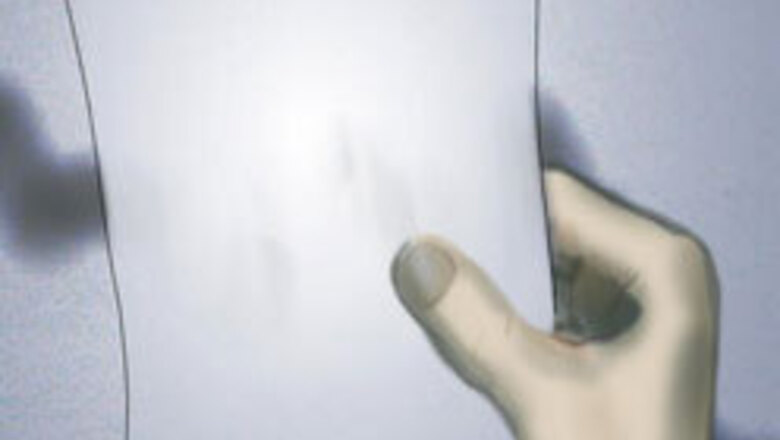
views
Washington: A US scientist claims to have developed a new kind of paper that can withstand temperatures of up to 700 degrees Centigrade.
The paper is made from nanowires and is resistant to bacteria. It can also be written on time and time again.
Scientists from the University of Arkansas, Fayetteville, who developed the paper, say it could be used in a rage of applications.
It can be used to make products from reusable bacteria filters to flame retardant wallpaper that automatically decomposes airborne toxins.
Alternatively, it could be used to make rewritable, erasable, heat-resistant billboards along highways, said a scientist.
Dr Z Ryan Tian, assistant professor of chemistry and biochemistry at the university, says the paper’s resilience lies in its ingredient.
While most paper is made from cellulose fibres, the new material is made from nanowires of titanium dioxide, a chemical compound common in white pigment, he said.
“The starting materials are simple, non-toxic and inexpensive. The assembly is a room temperature casting process, as simple as drying paper pulp,” he said.
For making the nanowires, scientists first mixed powdered titanium dioxide with an alkaline solution and placed it in a teflon-coated container. Then they heated the mixture in an oven at 150-250 degree Centigrade for one to several days.
They found that as the alkali evaporated, it left behind long, white fibres.
The nanowires were then washed in distilled water and, when still the consistency of wet pulp, cast into 3D shapes such as tubes, bowls and cups. After the paper dried, they found it could be bent, folded or trimmed with scissors.
The finished product could even withstand temperatures of 700 degrees Centigrade, which made it flame-retardant.
“It also makes it possible to sanitise the paper with a torch flame or ultraviolet light. The paper's properties also make it ideal for a reusable filter membrane in gas masks,” a researcher said.
Professor Zhong Lin Wang, director for the Center for Nanostructure Characterisation and Fabrication at the Georgia Institute of Technology in Atlanta said it was possible to adjust the pore size of the paper during the casting process so that the holes are big enough to let oxygen in but small enough to block toxins.
In addition, when photons of light hit the nanoscale fibres, a charge is created that works to zap and destroy any toxins on the surface, he added.
“This research shows a novel way of fabricating membranes made of titanium dioxide nanowires,” he said.
The team has now applied for a patent on the process and is looking for industrial partners to license and commercialise applications of the nanopaper technology.
















Comments
0 comment